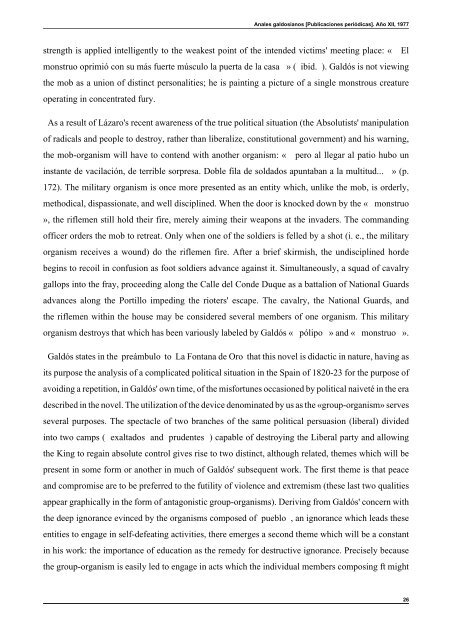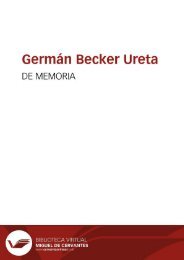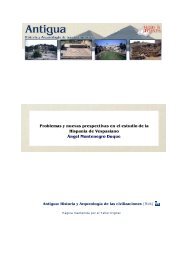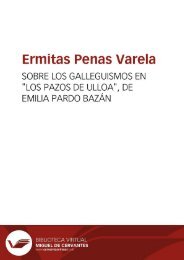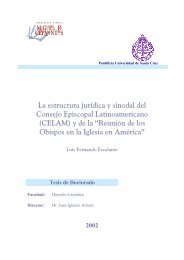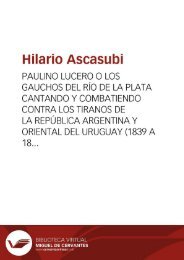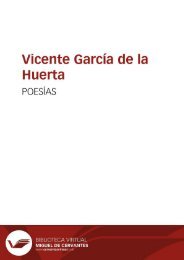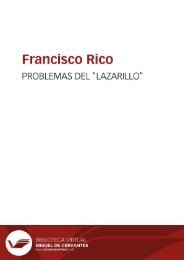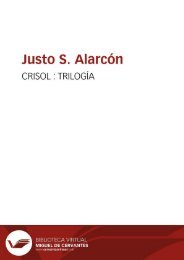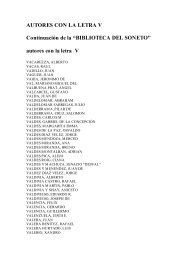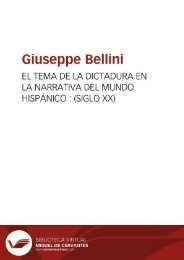You also want an ePaper? Increase the reach of your titles
YUMPU automatically turns print PDFs into web optimized ePapers that Google loves.
Anales galdosianos [Publicaciones periódicas]. Año XII, 1977<br />
strength is applied intelligently to the weakest point of the intended victims' meeting place: « El<br />
monstruo oprimió con su más fuerte músculo la puerta de la casa » ( ibid. ). <strong>Galdós</strong> is not viewing<br />
the mob as a union of distinct personalities; he is painting a picture of a single monstrous creature<br />
operating in concentrated fury.<br />
As a result of Lázaro's recent awareness of the true political situation (the Absolutists' manipulation<br />
of radicals and people to destroy, rather than liberalize, constitutional government) and his warning,<br />
the mob-organism will have to contend with another organism: « pero al llegar al patio hubo un<br />
instante de vacilación, de terrible sorpresa. Doble fila de soldados apuntaban a la multitud... » (p.<br />
172). The military organism is once more presented as an entity which, unlike the mob, is orderly,<br />
methodical, dispassionate, and well disciplined. When the door is knocked down by the « monstruo<br />
», the riflemen still hold their fire, merely aiming their weapons at the invaders. The commanding<br />
officer orders the mob to retreat. Only when one of the soldiers is felled by a shot (i. e., the military<br />
organism receives a wound) do the riflemen fire. After a brief skirmish, the undisciplined horde<br />
begins to recoil in confusion as foot soldiers advance against it. Simultaneously, a squad of cavalry<br />
gallops into the fray, proceeding along the Calle del Conde Duque as a battalion of National Guards<br />
advances along the Portillo impeding the rioters' escape. The cavalry, the National Guards, and<br />
the riflemen within the house may be considered several members of one organism. This military<br />
organism destroys that which has been variously labeled by <strong>Galdós</strong> « pólipo » and « monstruo ».<br />
<strong>Galdós</strong> states in the preámbulo to La Fontana de Oro that this novel is didactic in nature, having as<br />
its purpose the analysis of a complicated political situation in the Spain of 1820-23 for the purpose of<br />
avoiding a repetition, in <strong>Galdós</strong>' own time, of the misfortunes occasioned by political naiveté in the era<br />
described in the novel. The utilization of the device denominated by us as the «group-organism» serves<br />
several purposes. The spectacle of two branches of the same political persuasion (liberal) divided<br />
into two camps ( exaltados and prudentes ) capable of destroying the Liberal party and allowing<br />
the King to regain absolute control gives rise to two distinct, although related, themes which will be<br />
present in some form or another in much of <strong>Galdós</strong>' subsequent work. The first theme is that peace<br />
and compromise are to be preferred to the futility of violence and extremism (these last two qualities<br />
appear graphically in the form of antagonistic group-organisms). Deriving from <strong>Galdós</strong>' concern with<br />
the deep ignorance evinced by the organisms composed of pueblo , an ignorance which leads these<br />
entities to engage in self-defeating activities, there emerges a second theme which will be a constant<br />
in his work: the importance of education as the remedy for destructive ignorance. Precisely because<br />
the group-organism is easily led to engage in acts which the individual members composing ft might<br />
26


